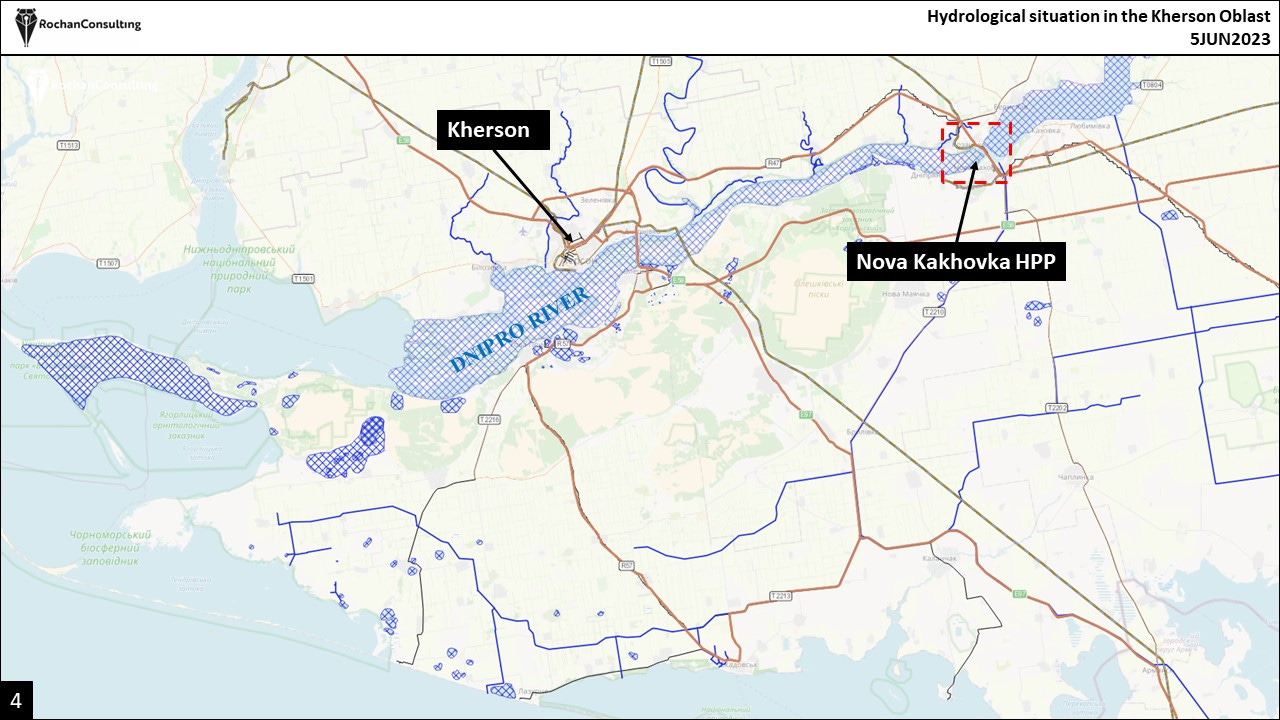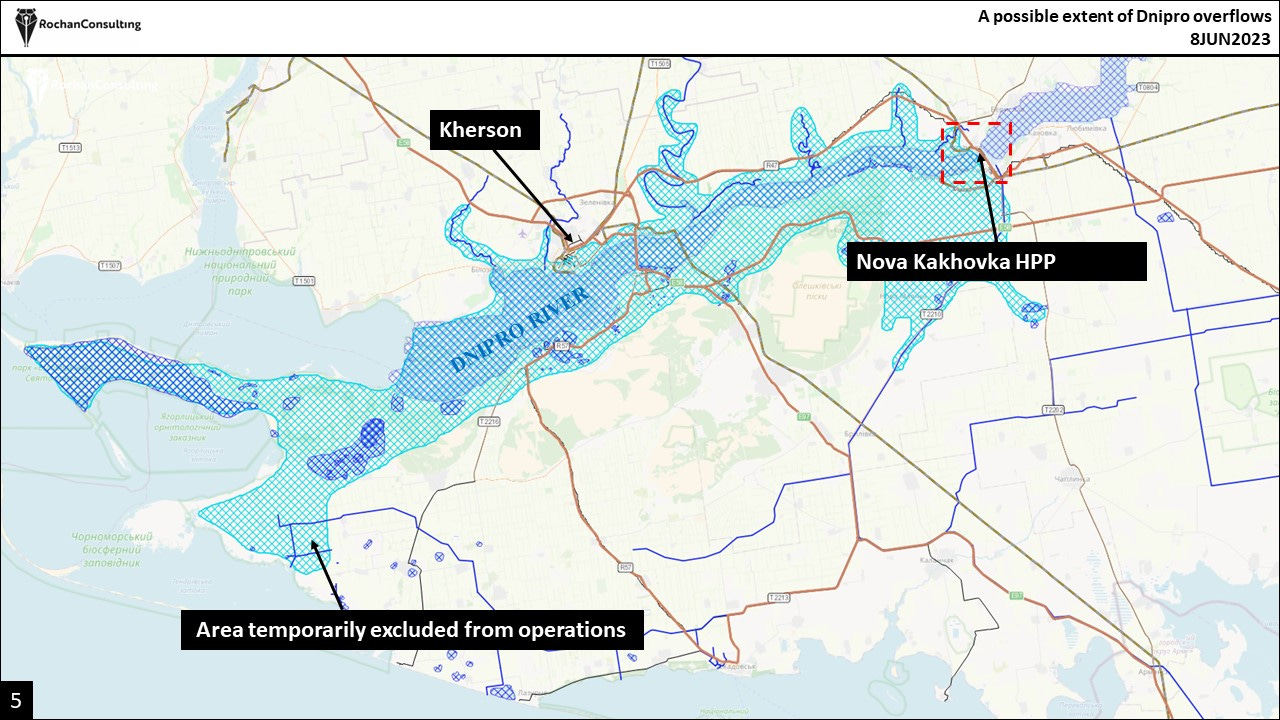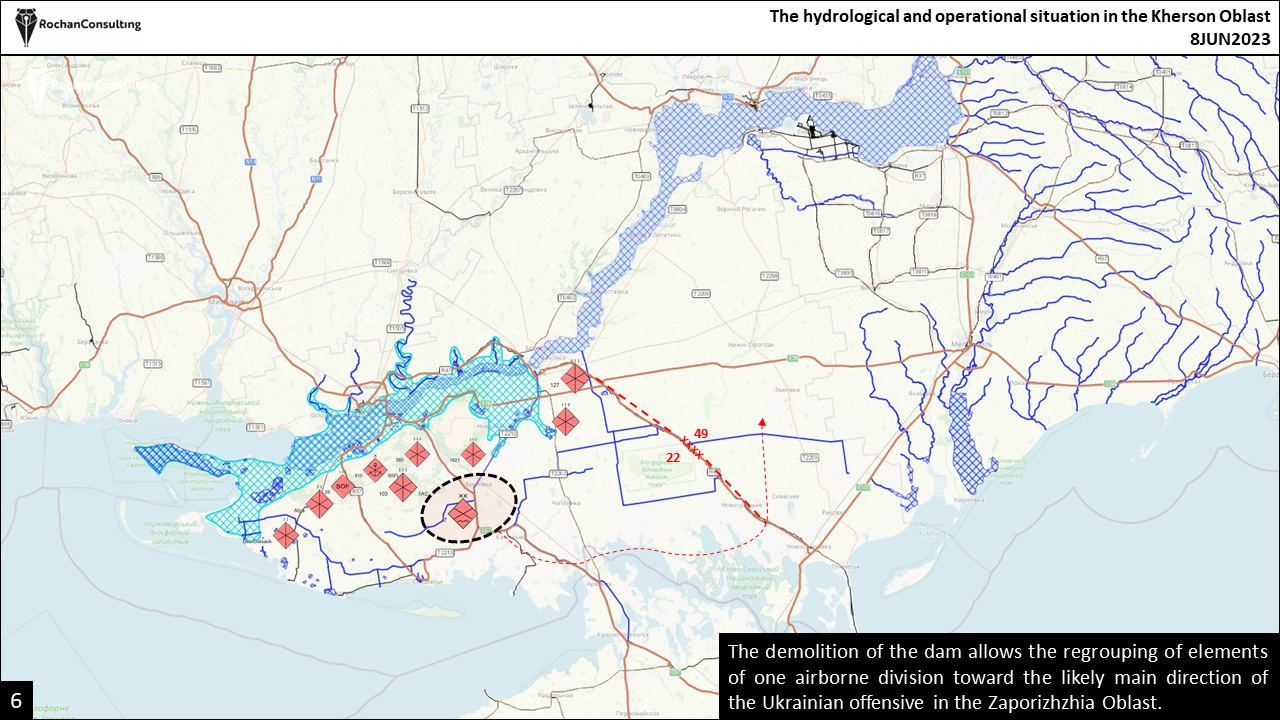Ukraine Conflict Monitor
The military situation in the Kherson Oblast after the collapse of the Nova Kakhovka Dam
BLUF: The destruction of the Nova Khakovka dam and subsequent Dnipro’s overflows halt Ukrainian operations in the Kherson Direction and free up some Russian forces that could be deployed to more pressing areas.
In the early morning hours of 6JUL, the Kakhovka Dam failed. It is unclear whether its destruction occurred due to structural failures as Russia-controlled forces increased water levels in the Kakhovka Reservoir for months prior to the event or whether the dam was intentionally destroyed.
Regardless of what the cause was od the dam's failure was, the subsequent uncontrolled water flow downstream will change the hydrological situation and the topography in the region, at least over the next few months. It, in turn, will impact both sides' operations in the Kherson Oblast.
Prospects of a river-crossing operation before 6JUN
Many argued that a Ukrainian river-crossing operation across Dnipro had always been a low-probability event. We are unlikely ever to know whether Kyiv seriously contemplated conducting such a complex and risky operation. However, over the last few months, Ukrainian units stationed on Dnipro's right bank increased artillery attacks on Russian targets in occupied territories to force them to pull back from the river bank and/or constantly change their deployment areas to avoid being hit by Ukrainian artillery. According to the Ukrainian Operational Command "South", these efforts were partly successful.
At the same time, the tempo of Ukrainian SOF infiltration operations on the Dnipro Delta islands increased. Regular Ukrainian formations also recaptured some land on the Ostriv Velykyi Island. Reports also suggested that in some instances, Ukrainians established footholds on Dnipro's left bank, opposite Zabaryne.
We do not know whether these Ukrainian operations had a fixing character, forcing Russians to maintain a more or less robust military presence in the region, or as stated above, they were battle-shaping operations in anticipation of a counterattack across the Dnipro.
The demise of the Kakhovka Dam now forces Russia and Ukraine to move deeper inland in their respective areas and, at least temporarily, forces Ukraine to abandon its operations, including SOF raids and reconnaissance-in-force. Prospects of a Ukrainian cross-river attack are now also non-existent.
Analysis of the causes and effects of the destruction of the Nova Kakhovka dam
The hydrographic situation before the dam's destruction forced Russia to maintain forces capable of stopping any potential Ukrainian actions in that direction.
The conditions allowed Ukrainian light subunits to cross the Dnipro River, intending to liberate key areas to facilitate further offensive operations towards Kherson and Crimea.
The terrain conditions allowed operations to be conducted along three designated directions, AA-1, AA-2, and AA-3. The success would depend on capturing these three key areas.
However, assessing the potential of the units deployed in that direction, one can conclude that the Ukrainian side did not have sufficient forces to cross the Dnipro River. Therefore, the likely objective of the Ukrainian units was to engage and tie down Russian troops in the Kherson direction. To achieve this, Ukrainians conducted special operations, raids, reconnaissance, and artillery strike missions.
The dam's destruction limits the manoeuvrability of any forces in the Kherson direction and renders the area unusable for military operations, likely for four to eight weeks. As a result, Moscow no longer needs to maintain the previous level of military presence in the area, which task was to prevent Ukrainian units from crossing the Dnipro River.
To summarise, as a result of the dam's destruction, Ukraianine is at least temporarily unable to tie down Russian units in the Kherson direction. Russia can thus redeploy elements of one airborne division, which likely served as the operational reserve in case of a potential Ukrainian offensive in the area. Other forces under the command of the 22nd Army Corps may also be relocated.










